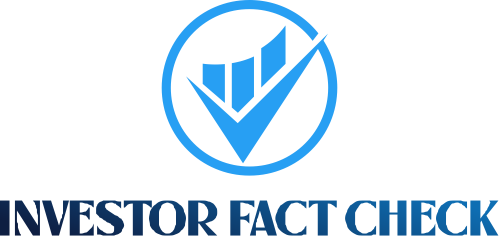metamorworks/iStock via Getty Images
While the market narrative is dominated by external forces like AI advancements, credit cycles, and geopolitical uncertainty, I concentrate my efforts on what I believe is more knowable and enduring: the ability of management teams to allocate capital effectively. I seek out those who aim to compound value through disciplined reinvestment and operational excellence, regardless of the macroeconomic weather.
The structure of this compounding varies widely across the portfolio. It includes massive internal reinvestment engines like Alphabet (GOOG) and Amazon (AMZN), which provide direct exposure to AI by deploying significant capital into their proprietary infrastructure. It also encompasses diversified investment platforms, ranging from the alternative asset management models of KKR (KKR) and Brookfield (BN) (which also provide indirect access to the AI opportunities) to established holding companies like Fairfax and Prosus. I also look for disciplined, serial acquirers, whether broadly decentralized and sector-agnostic, like my newest holding, Roko (which I introduce later in this letter), or focused on consolidating specific industrial verticals, like Terravest (OTCPK:TRRVF) and Ashtead (OTCPK:ASHTF). This spectrum, spanning different sizes, structures, and sector focuses, is intentional; it provides exposure to diverse compounding engines and, I believe, offers resilience across various market environments.
Thank you for your trust. A meaningful portion of my own net worth is invested alongside yours, and I remain focused on the progress we can make through the rest of 2025.
Performance
As reported by our fund administrator, the Master Account, in which I am personally invested alongside SMA clients, returned 3.0% net in Q3 2025, compared to 8.1% for the S&P 500. As of Q3 2025, the top ten positions (excluding cash/treasuries) comprised approximately 68% of the portfolio, and the portfolio held approximately 17% in cash and/or short-term treasuries.
ACML performance is net of fees and standard costs.
Portfolio – top and bottom performers1
As calculated by our fund administrator on the Master Account.
Alphabet Inc. (GOOG)
Alphabet’s shares rose this quarter, partly driven by the resolution of a major regulatory overhang. On September 2nd, Judge Mehta issued the remedies decision in the DOJ antitrust case concerning Search. The outcome was far less severe than feared, as the court rejected the most draconian measures, including the structural divestiture of Chrome or Android and a broad ban on distribution payments. While Google is now restricted from paying for exclusive default placement (e.g., with Apple), it can still compensate partners for non-exclusive default status. The enacted remedies, which include tailored data sharing and syndication on commercial terms, appear manageable.
With one major legal overhang out of the way (another case on the Ad tech monopoly remains outstanding), focus can now return to Alphabet’s fundamentals, particularly its strong positioning in Artificial Intelligence. Google’s advantage lies in its vertically integrated stack, spanning proprietary infrastructure (TPUs), leading models (Gemini), and scaled global distribution platforms (Search, Android). This full-stack approach allows for optimization and efficiency that competitors cannot easily match; for example, Google claims it has twice the power efficiency of competitors and a 33x efficiency in inference, demonstrating its progress in managing the cost of AI deployment. AI is enhancing Search utility through features like AI Overviews and Lens, driving increased user engagement. Additionally, Google Cloud is rapidly gaining traction, now exceeding a $50 billion annual run rate (growing 32% YoY) with a $106 billion backlog, as enterprises choose Google for its differentiated AI capabilities. This leadership is evident in Google’s support for 9 of the top 10 AI labs and its processing roughly 4x the token volume of other providers. The company continues to deliver strong financial performance, with 14% revenue growth and strong operating margins in the last quarter, allowing it to fund an aggressive $85 billion capex plan for AI infrastructure.
Prosus’s valuation has historically been dominated by its largest holding, Tencent. While Tencent itself has performed well, driven by strong operations and a (perhaps temporarily) benign geopolitical backdrop, the market is now starting to reward Prosus for the decisive actions it has taken to unlock the value of its operating portfolio.
Prosus is accelerating its shift from a passive investment holding company into a scaled, global technology operator. The strategy is to build the “#1 lifestyle ecommerce company” across integrated regional ecosystems in Latin America, Europe, and India. This consolidated eCommerce portfolio recently reached an important inflection point, delivering $443 million in adjusted EBIT and, for the first time, achieving positive free cash flow independent of the Tencent dividend. Management has outlined a clear path to “at least $800M” in EBIT for FY26, with potential for significantly more thereafter.
This momentum is supported by disciplined capital allocation. Over the last 12 months, Prosus has raised $2.6 billion from non-core asset disposals while deploying $7.8 billion into strategic acquisitions. Key additions include the travel platform Despegar (which, combined with iFood, will anchor a commerce platform for 13 million loyalty subscribers), JustEatTakeaway (securing a key food delivery position in Europe), and La Centrale (a leading French auto classifieds bolt-on for OLX Group).
While the eCommerce business remains small compared to the juggernaut that is Tencent, Prosus’s continued focus on its own operations, combined with the highly accretive share buyback, creates a clear path to shareholder value independent of Tencent. This strategy, long promised by the company, should hopefully put to rest prior investor fears of capital misallocation.
Brookfield Corporation (BN)
The Brookfield machine continues to compound intrinsic value, delivering robust Q2 results across its diversified platform. Distributable earnings (DE) before realizations grew 13% year-over-year, driven by nearly $100 billion in capital inflows over the last twelve months, demonstrating the strength of its ecosystem spanning real assets, insurance, and credit.
At its recent Investor Day, management once again laid out an ambitious plan targeting a 25% annualized growth in DE per share through 2030. This plan anticipates generating $53 billion in free cash flow, leaving $25 billion in excess cash available for opportunistic buybacks and M&A. Management is aggressively scaling the Wealth Solutions platform and investing insurance float, now calling itself an “investment-led insurance organization.” This makes sense as Brookfield’s long-dated, stable life insurance liabilities align well with its expertise in investing in long-duration, essential real assets like infrastructure and renewables. This matching of duration and risk profile enhances capital efficiency and supports the scaling of BAM’s funds without materially altering the overall risk profile.
Management is also leaning heavily into the multi-trillion-dollar capital requirements for AI infrastructure. In an environment where “AI” attracts significant hype and speculative investment, Brookfield’s approach is distinctly de-risked. They are building essential infrastructure such as data centers and the renewable power required to run them, underpinned by long-term commitments from the financially strong hyperscalers, such as a 3,000 MW hydroelectric framework with Google and a 10.5 GW renewable agreement with Microsoft.
Gold ETF
Gold had a strong Q3, with spot price heading towards the $4,000/oz milestone. It’s hard to pinpoint a single catalyst. We’re seeing a mix of demand from central banks, investors rotating into gold as a portfolio hedge (instead of longer-dated bonds), and the classic “debasement trade.” That debasement narrative seems to be gaining traction. It serves as a catch-all for a wide range of persistent macro anxieties. It encompasses not just elevated geopolitical and policy uncertainty, but also deep concerns about the longer-term inflation backdrop. It also includes investor fears about “debt debasement,” a direct consequence of persistently high government deficits across major economies, as well as a more general waning of confidence in fiat currencies and central bank independence.
On a side note, I had previously rotated out of the miner ETF and into physical gold, citing the industry’s poor capital allocation. That was the wrong relative trade, as the miners have had an even stronger rally. Still, it is hard to be too disappointed with the physical position up roughly 50% YTD.
Melrose Industries Plc (OTCPK:MLSPF)
Melrose Industries continues its evolution into a pure-play aerospace leader. My thesis has been that the market is overly skeptical of the company’s ability to generate cash, focusing on temporary drags from its restructuring while overlooking the powerful, long-term earnings profile of its underlying assets. The company’s recent first-half results offered the first real evidence that this cash flow inflection is now underway.
For the first half of 2025, Melrose reported a 29% increase in operating profit and, most importantly, a £91 million year-over-year improvement in free cash flow, beating consensus expectations. This performance was driven by strong execution; management completed its multi-year defense contract, repricing it 6 months ahead of schedule, a key step toward improving margins in its Structures division. With the broader restructuring program set to conclude by year-end, a major cash drag is being eliminated, paving the way for structurally higher cash generation from 2026 onwards.
The crown jewel remains the Engines division, with its unmatched portfolio of 19 Risk and Revenue Sharing Partnerships (RRSPs) that entitle it to ~70% of global flying hours. While the market has been fixated on the cash burn from two GTF engine programs, these are on track to turn cash-positive by 2028, at which point the entire portfolio becomes a powerful, multi-decade annuity stream. The recent results reinforce my conviction in the future cash generation.
Terravest Industries (OTCPK:TRRVF)
TVK is a key manufacturer of steel storage tanks, transport trailers, and related processing equipment. They serve a wide array of durable, essential end-markets, including agriculture, energy distribution, and construction. The stock’s decline following its August earnings report was not entirely surprising; given the strong run it has had over the last year, any perceived “miss” was bound to cause a pullback as short-term holders locked in gains.
The third-quarter results did miss expectations. While headline revenues grew due to recent acquisitions, “same- store sales” of the base portfolio businesses actually declined by 2%. Management pointed to several factors for this softness, including reduced demand for certain storage tanks and energy equipment, as well as uncertainty created by recent tariffs.
Net income and free cash flow, however, declined 8% and 38% respectively, driven mainly by a significant increase in finance costs. Terravest has had a very active M&A year, including the acquisition of LBT, Simplex, Tankcon, and its largest to date, Entrans. The increased debt taken on to fund this spree has led to financing costs rising 195% in the quarter. Terravest should reduce its relative funding costs as it integrates these new businesses and ramps sales through cross-selling and organic growth. The Entrans acquisition, its largest to date, meaningfully expands TVK’s US footprint and opens up new, high-growth areas, such as defense contracts and a newly developed liquid hydrogen trailer product line.
TerraVest’s core business serves durable end markets, providing a relatively stable platform for its high-ROI M&A strategy. Given its relatively small size, TVK can find ample opportunities to reinvest capital and continue compounding for a long time to come.
Burford Capital (BUR)
Burford’s share price performance remains dominated by the $16 billion YPF judgment against Argentina. In July, US District Judge Preska issued a “turnover order” directing Argentina to hand over its controlling YPF stake to Burford’s clients. This was initially viewed as a major win and the strongest collection tool Burford had to enforce its judgment. However, the US Department of Justice (DOJ), representing the US government, filed an amicus curiae brief arguing that seizing a sovereign nation’s controlling stake in its primary state-owned enterprise would violate principles of sovereign immunity. In August, the US Second Circuit Court of Appeals granted Argentina’s request to stay Judge Preska’s order.
As a result, the main appeal has oral arguments scheduled for October 29, with a decision anticipated by mid-2026. Factoring in further appeals, the likely earliest conclusion to the US litigation is 2027, and potentially longer if the Supreme Court takes up the case. Unsurprisingly, these developments have weighed on the share price. Argentina is expending considerable resources to fight the case, aiming to delay and degrade the judgment to force a deeply discounted negotiated settlement. The deciding factors will be the point at which Argentina’s need for international market access outweighs the political cost of paying, and Burford’s ability to successfully execute enforcement.
In the meantime, Burford’s underlying portfolio is maturing, and demand for Burford’s capital remains robust. Group-wide new commitments reached $1.1 billion in the first nine months of 2025, and Q3 deployments totaled $315 million, reflecting continued investment discipline. In my view, Burford’s current share price reflects little to no value for the YPF claim. The core business, though lumpy, should continue to grow, with the YPF outcome representing a “free option” for investors.
Cogent Communications (CCOI)
The investment thesis for Cogent still hinges on substantial revenue growth from wavelength services. The company is targeting approximately 500 installations per month, with an average monthly revenue per wave of $2,000, implying a potential revenue run rate of roughly $144 million (500 installations x 12 months x $24k/year) at a very high contribution margin of over 90%.
While we are seeing positive signs, wavelength revenue grew 27% sequentially (and 147% year-over-year) to a $36 million run-rate, the headline pace of reported installations, at 147, was still far below the targeted 500/month run- rate needed to validate the thesis. But a closer look at the numbers reveals that Cogent also installed and billed for approximately 330 additional wave connections, which were not yet reflected in the reported revenue. The sum of these two figures, approximately 477, gets very close to the target. CEO David Schaeffer attributes the recent miss not to a lack of demand, highlighting a strong funnel and zero pre-install cancellations, but to a lag in customer acceptance. He argues that customers, conditioned by competitors’ multi-month delays, are “caught off guard” by Cogent’s ability to deliver within 30 days (vs. months for competitors). This creates a temporary gap between installation and revenue recognition as Cogent builds credibility in this new market and convinces customers to change long-held procurement habits.
The market has clearly not reacted well to this short-term execution risk. This was combined with the average performance of the rest of the business (strong performance of the IPv4 business, but weaker headline numbers for other divisions due to the final stages of “grooming” low-margin connections from the Sprint acquisition). The next quarter will be important as Cogent must now show actual evidence of execution.
Fairfax Financial Holdings Ltd (OTCPK:FRFHF)
Fairfax’s fundamental performance remains impressive, despite the modest share price pullback in Q3, a natural consolidation following its significant multi-year run. The Q2 results, reported in July, underscored this strength, driving book value per share up 10.8% year-to-date to $1,158, supported by a disciplined 93.3% combined ratio and strong investment results.
The company has established a significantly higher and more durable earnings baseline than before 2021. As I’ve noted previously, earnings quality has also markedly improved, with the majority of income now generated by predictable sources like interest, dividends from associates, and underwriting. This structure makes Fairfax significantly more resilient to the P/C insurance cycle than traditional peers
As the hard market inevitably softens, it is helpful to remember Fairfax’s strong track record of capital allocation. They focus on buying more of what they already own at good prices. Since 2021, they have deployed $6.5 billion into buybacks ($3.2B) and acquiring minority stakes in core subsidiaries ($3.3B). The buybacks alone cut the share count by 17% well below book value. This approach directly boosts per-share value by increasing earnings while reducing the share count. This discipline is also evident in their counter-cyclical management. They acquired aggressively during the 2014-2019 soft market when assets were cheap and pivoted to organic growth during the recent hard market when margins were high.
I fully exited the Cirata position during the quarter. The investment thesis required clear, repeatable growth in what it now calls “Data Integration,” which ultimately failed to materialize. While I credit management for executing well on controllable items, divesting non-core assets ($2.5m), refocusing the company, and cutting quarterly cash burn from $3.2m to $0.8m, the revenue engine never accelerated. Reported contract wins remain too small to validate the thesis. Consistent with my evolving approach to be less forgiving when business execution fails to meet expectations, I sold the position and realized the tax loss in applicable accounts.
New position – Roko
This quarter, I initiated a new position in Roko AB, a Scandinavian-based decentralized serial acquirer. The investment thesis is centered on the outstanding track record and operational philosophy of its co-founder and CEO, Fredrik Karlsson.
Mr. Karlsson was the longtime CEO of Lifco AB (OTCPK:LFABF), widely recognized as one of the benchmarks for successful serial acquisition in Europe. The investment in Roko provides us with the opportunity to partner with a proven capital allocator as he executes “version 2.0” of a strategy refined over decades of success.
Under Mr. Karlsson’s leadership, Lifco built an acquisition engine characterized by consistent profit growth and expanding margins. The philosophy was simple: acquire high-quality, niche market leaders with stable earnings, and empower their management teams to operate autonomously. This approach yielded outstanding results. Company presentation materials from the time show that between 2006 and 2019 (the year of his departure), Lifco grew sales and EBITA at compound annual growth rates of approximately 12.8% and 17.7%, respectively. Since its IPO in November 2014, Lifco has compounded its share price at approximately 25% per year through September 30, 2025.
Mr. Karlsson departed Lifco in February 2019. As I understand it, the driver was his desire for greater owner economics, preferring significant equity alignment over a high salary. Fredrik Karlsson and Tomas Billing co- founded Roko in 2019 and together own 20% of the company, which strongly aligns with our interests as shareholders.
Roko went public on the Nasdaq Stockholm exchange on March 11, 2025. As of late October 2025, it has a market capitalization of approximately SEK 27 billion. The company aims to be a perpetual owner of small- and medium- sized European businesses, and maintains a disciplined approach to capital deployment, reportedly evaluating around 500 companies annually against strict criteria:
Core Criteria
- Continuous profit growth (assessed over the last 10 historical years).
- EBITA margin above 10%.
- Management in place and willing to remain post-acquisition.
Other Criteria:
- Market leadership within its specific niche.
- Asset-light business models (Capex <5% of sales and proven working capital control).
- Operating profit (EBITA) typically between €2 million and -€10 million
- Low customer concentration (largest customer <12% of net sales).
The decentralized model is central to Roko’s philosophy. Headquarters focuses on capital allocation and supporting subsidiary CEOs, rather than interfering in day-to-day operations. Roko encourages subsidiaries to exercise pricing power and provides guidance on best practices but avoids heavy bureaucracy. Monthly reporting is intentionally limited to income statements and balance sheets. They specifically avoid imposing centralized budgets or targets, which they believe can incentivize management to manage short-term earnings or be less transparent with HQ when challenges arise.
Another defining feature of the strategy is strict sector agnosticism. This differs from some other acquirers who believe deep domain expertise is necessary to manage risk. Roko’s rationale is that strict sector focus limits the opportunity set, potentially forcing inactivity or overpayment when targets in those sectors are unavailable or expensive. The diversified portfolio mitigates the risk of failure in any single entity. As the CEO has noted, “the beauty of this business model is that you invest in many companies in different industries, so it doesn’t matter if you make a mistake in one company… The mistake you can make is buying a company for 20% more and it goes down 10%, but it still contributes cash and you end up with a slightly lower return on investment.”
Roko also mitigates operational risk through its transaction structure. It typically acquires a majority stake and enters into 5-10 year “put-call” agreements with the founders or management for the remaining minority stake which keeps managers economically motivated. The agreement grants the manager the right (a put option) to sell their remaining shares to Roko, and grants Roko the right (a call option) to buy them out at a future date. The price for this future transaction is typically based on a predetermined formula linked to the subsidiary’s performance (e.g., a multiple of average EBITA) leading up to the exit. This strongly incentivizes the manager to maximize profitability during the holding period, as their final payout is directly tied to the results delivered.
Roko has scaled rapidly since 2019. Currently, the portfolio consists of 29 companies (19 B2B and 10 B2C). The company has grown revenues from a standing start to approximately SEK6.4 billion (LTM annualized). Performance remains robust, with the Q3 2025 interim report showing an Adjusted EBITA margin of 21% and a return on equity of approximately 13%. It is still early in its journey. This implies a long runway for growth, but it also comes with inherent risks. For example, there is a potential “wall” of minority exits coming due in the latter half of this decade from the put-call agreements. This will require careful management of both cash outflows and succession planning, as each business is independently run. Given the relatively full valuation at the time I bought shares, I only purchased a starter position but am actively looking to add on any material share price weakness.
Trades
I bought a low-cost, short-dated Alphabet put to hedge litigation risk; it expired worthless after a favorable ruling. I traded around a small IBIT (bitcoin ETF) position and will hold the ETF directly next quarter. I added a small Burford stake after the Second Circuit stayed Judge Preska’s order against Argentina, though the entry was early. I exited Cirata and opened a starter position in Roko.
Individual clients’ separate accounts may show slightly different results; please refer to your quarterly reports for those details.
Samer Hakoura
Alphyn Capital Management, LLC
October 2025
Editor’s Note: The summary bullets for this article were chosen by Seeking Alpha editors.





